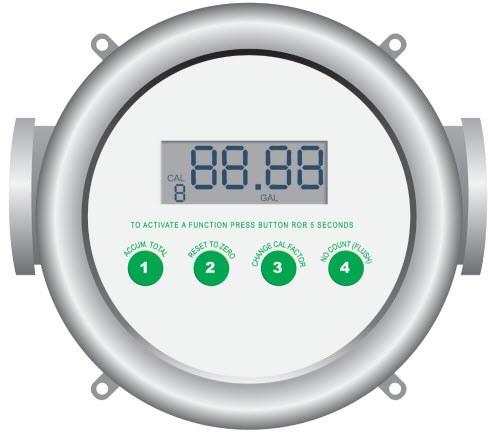Can you imagine a cab without fare meters? Without a fare meter, the cost to drive around the block or travel between two cities would cost the same. Similarly, it is difficult to charge for water services fairly without a water meter. Thus, meters of all kinds have become integral parts of our economy and lifestyle – in scientific testing, machine alerts and maintenance, resource conservation, and the way utilities bill for services.
What is a water flow meter, and why do utility providers install them?
A water flow meter is a type of measurement instrument fitted onto a pipe through which water flows. The meter continuously monitors the water flowing through the pipe to calculate the volume of water flow.
Utility providers that supply water to commercial and residential properties install water meters in order to charge customers for this valuable natural resource and to manage water consumption effectively. Some people regard meters as the fairest way to charge for water services.
There are other ways to use water meters:
- To determine the existence of a leak – if a meter continues to record data even with the water turned off, there’s a leak somewhere.
- To measure water produced by a well.
- To distinguish water usage among tenants in a multitenant building.
- To separate water used inside buildings from water used for landscaping. Dedicated irrigation meters make it easy to monitor irrigation water and ensure that utility providers are only charging sewage for water used inside, not outside.
Benefits of water meters
Installing water meters benefits not only utility providers but consumers. A water meter’s benefits to utility providers include the ability to:
- Measure the amount of water their customers use.
- Generate monthly bills based on the data that meters collect.
- Detect leaks and waterline breaks in the distribution system.
- Monitor their water supply (making sure they have enough to supply everyone).
- Safeguard water services for the future and provide the best value for customers.
A water meter’s benefits to consumers include:
- Reduced operating expenses through lower bills.
- Potential increase in property values.
- Having residents pay for their specific water usage even if they live in a multitenant property, where separate meters are used to sub-meter separate units within a homeowners’ association or apartment building.
- Contributing toward resource conservation by managing water usage efficiently.
To better understand how to achieve these benefits, it’s important to first understand water flow measurement and how meters are read. Stay tuned for the next installment in this series to find out.
Get started on your water metering design:
- Ultrasonic Water Flow Measurement Reference Design (TIDM-ULTRASONIC-WATER-FLOW-MEASUREMENT)
- Ultrasonic Water Flow Meter Design using Time to Digital Conversion (TIDM-ULTRASONIC-FLOW-TDC)
- Water Meter Reference Design for two LC Sensors, Using Extended Scan Interface (ESI) (TIDM-LC-WATERMTR)
- Water meter system block diagram
For more details on our system solutions for the global smart energy grid, be sure to check out ti.com/smartgrid and ti.com/flow.
- Related blog posts On the Grid:
- Get your flow meter designs flowing with the world’s lowest-power MCUs
- More than a trillion gallons of water dripped from U.S. homes last year
- Make metering more efficient
- European smart grid RF communication in Sub-1 GHz – part 4
- Simple tips for designing sensor circuits with extended scan interface for low power smart meter applications
- Measuring wheels in motion


